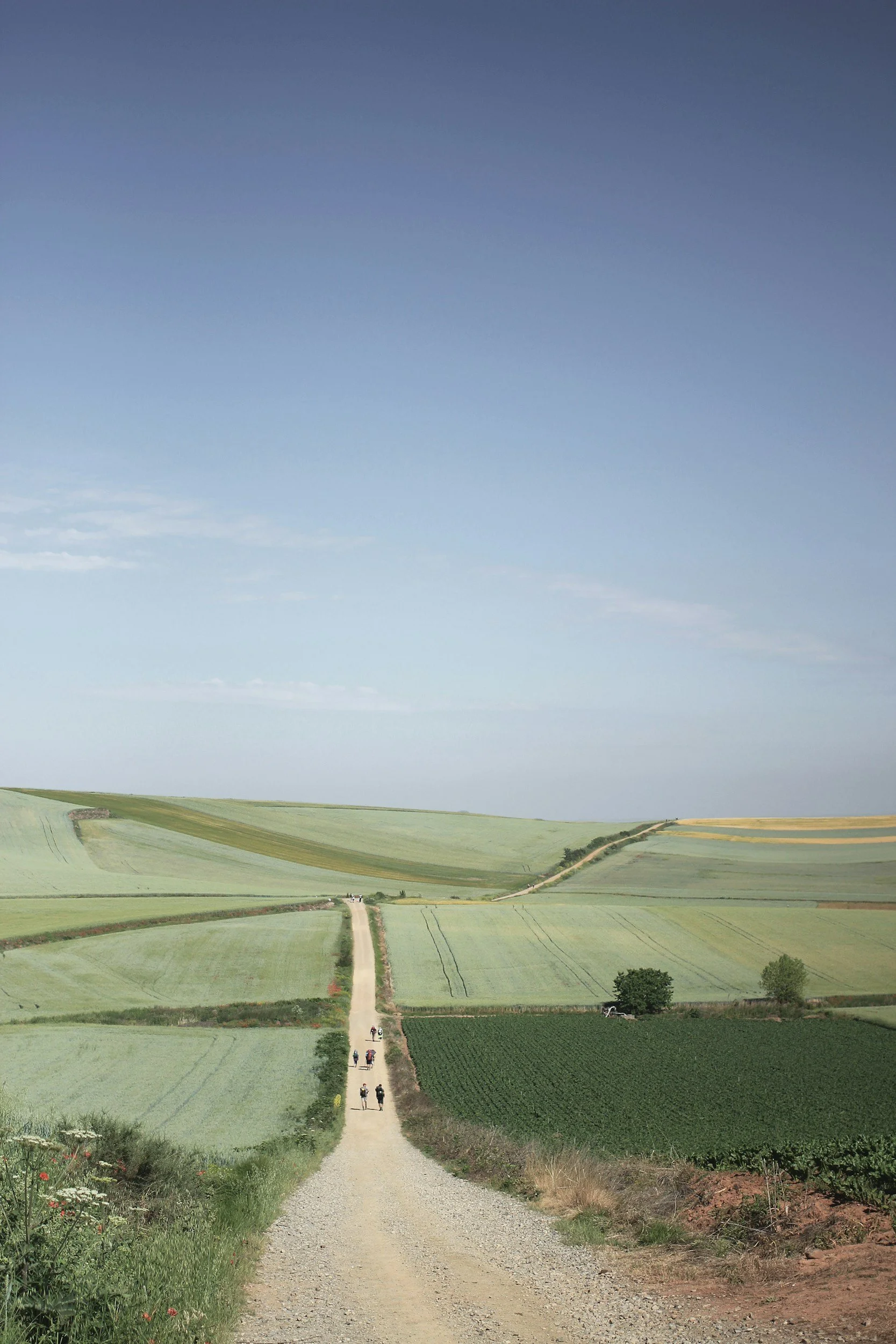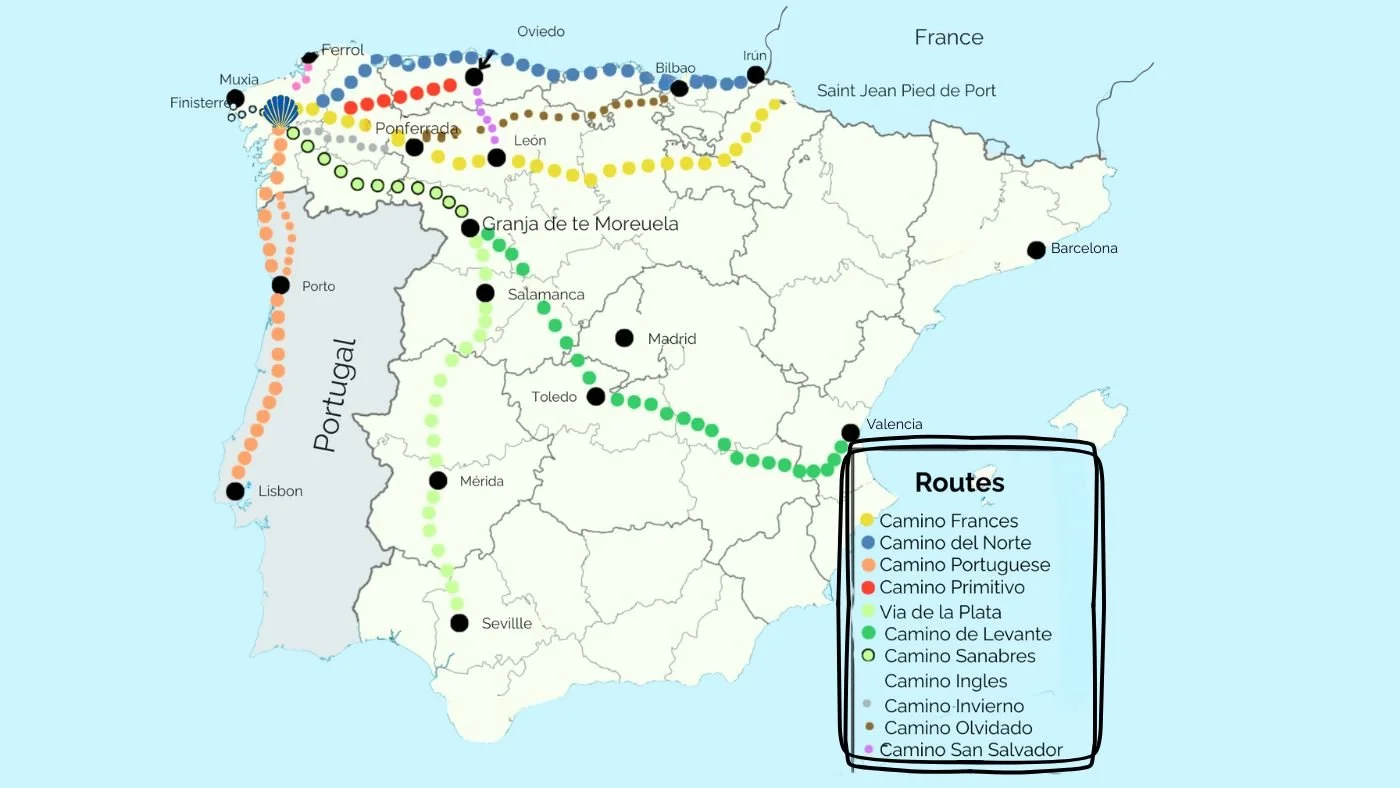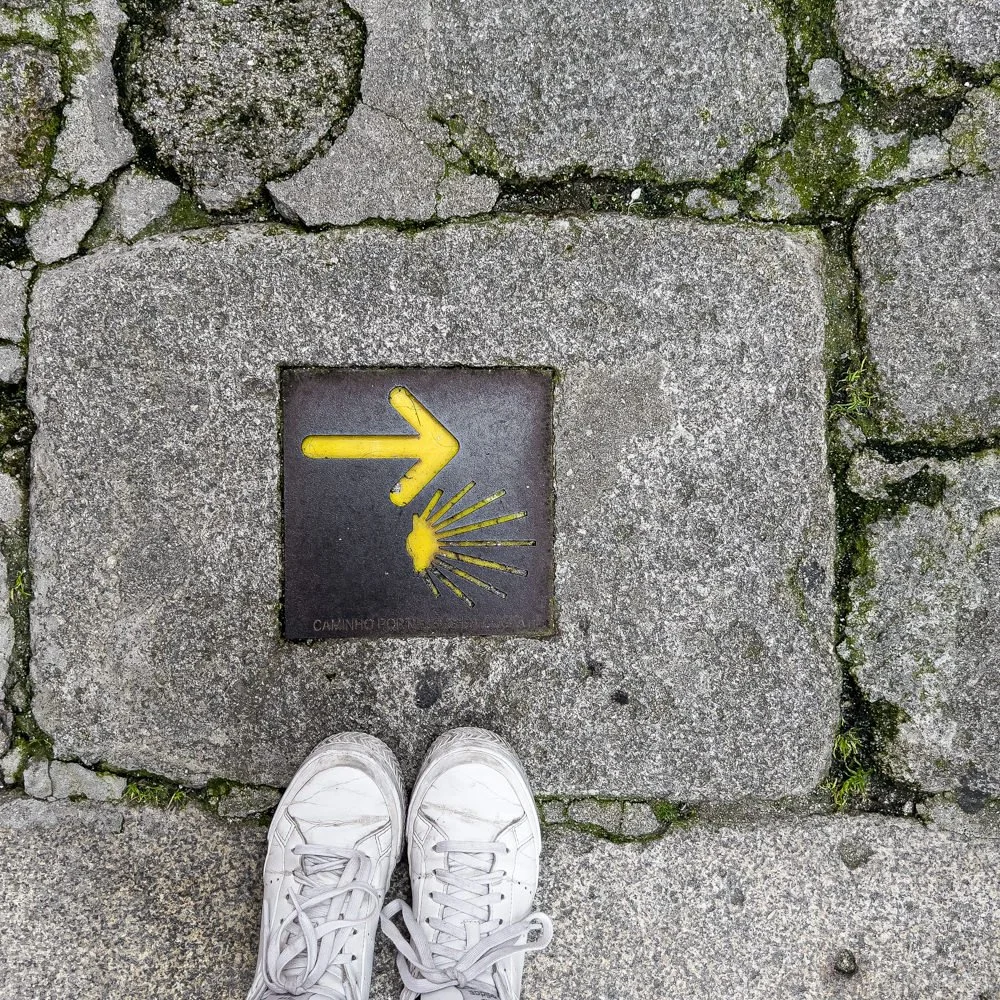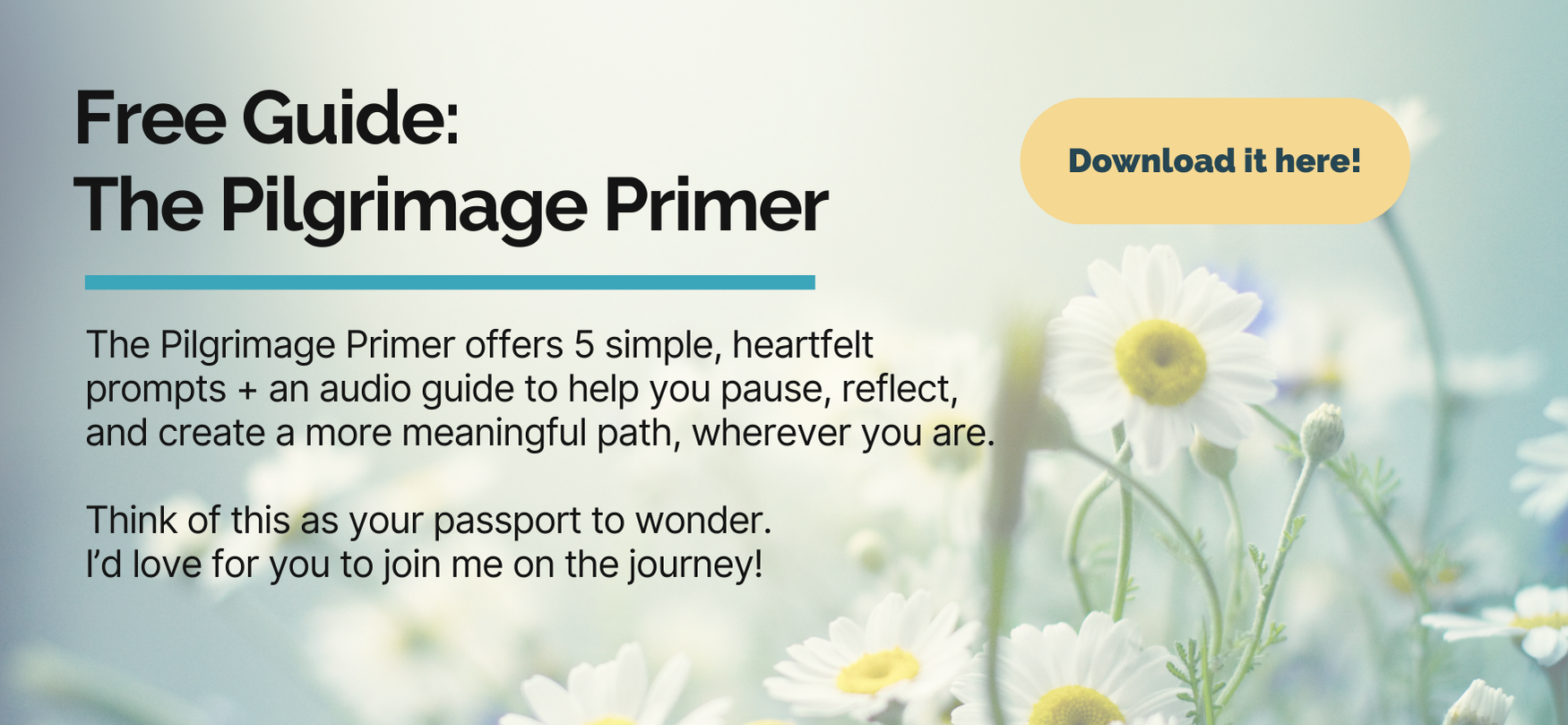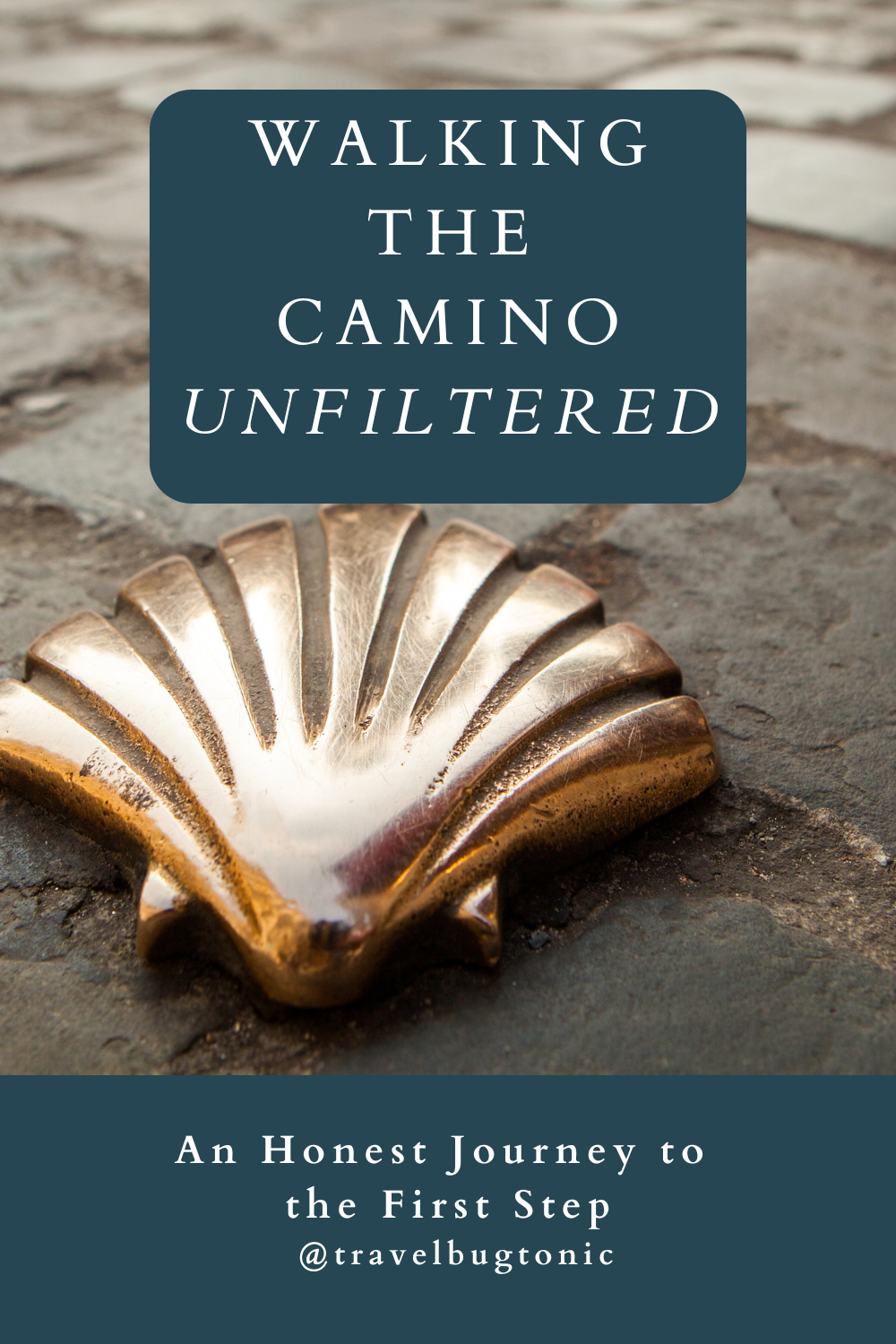Walking the Camino Unfiltered: An Honest Journey to the First Step
Third time’s a charm!
This trip marks my third attempt to begin walking the Camino de Santiago, though it will be my first actual pilgrimage.
My journey truly began when I turned 50, inspired to embark on a secular pilgrimage full of physical challenges and personal growth. But my milestone birthday happened during the COVID-19 pandemic, so I redirected my walking quest and prepared for a DIY experience closer to home instead.
Once the world opened up again, I still wrestled with the idea of a famous pilgrimage. I explored alternatives to the Camino and enjoyed several less "popular" thru-hiking experiences. Last year, I saw an opportunity to join a group of fellow travel coaches walking the Camino together and crafted a trip that would be partly solo and partly with the group. But life had other plans; an unexpected change in my priorities meant I had to cancel the trip.
Now, with my third attempt on the horizon and the countdown officially on, I am more excited than ever. What thrills me most is how this journey has evolved from my original vision into something that truly aligns with who I am right now. Time and consideration have shaped the trip into a deeply intentional journey. I've since learned that this entire preparation phase is considered the "departure stage" of a pilgrimage - the symbolic leaving behind of ordinary life before the journey even begins. It feels fitting that this part has taken me three attempts to get it right!
The Overwhelm is Real (And That's Okay!)
The Camino de Santiago, also known as the Way of St. James, is a network of ancient walking routes that all lead to Santiago de Compostela, Spain. While rooted in Christian history, today it is a popular path for hikers and cyclists seeking physical challenge, self-discovery and/or cultural immersion. If you've heard about the Camino, you've likely also discovered there's a dazzling number of options: routes, distances, and ways to approach it. This is where the overwhelm begins.
Which of the Camino routes will you choose?
Where will you start from? (Will you complete a full route or choose a shorter section from the various Camino de Santiago distances?)
Will you carry your pack, or have it transported each day?
Will you walk alone, with a friend, or as part of a guided group?
What season is best for your journey? (This impacts weather, crowds, and available services.)
How long will your pilgrimage take? (From a week to many weeks.)
How far will you walk each day?
People get completely overwhelmed with the options, to the point where decisions become a barrier to going at all.
I get it. I was there too.
Finding My Route: From Rebel to... Frances?
There are more than 200 recognized, historic Camino routes to Santiago de Compostela. Nine ways have become most popular due to historical significance, established infrastructure, and ease of access. Each offers its unique challenges, beauty, and personality. To give you a taste of the choices, here are a few of the most popular routes:
Walking the Camino Map - image adapted from CaminoLovers.com
Camino Francés: At 800km from St. Jean Pied de Port, France, this is the classic, most popular route that draws me in with its promise of meeting fellow pilgrims from every corner of the world. The well-worn path speaks to centuries of rich history, diverse landscapes, and excellent infrastructure (abundant albergues, cafés, and medical services).
Camino Portugués: This 620km route from Lisbon has me dreaming of walking the Camino in Portugal along the ocean. It is rapidly growing in popularity as a gentler alternative to the Francés.
Camino del Norte: Winding 825km along Spain's dramatic northern coastline, this path calls out to anyone who finds energy in ocean views and doesn’t mind stunning vistas with some serious hills!
Camino Primitivo: The "Original Way," this 320km mountainous route from Oviedo appeals to the part of me that craves authentic challenge and the kind of quiet that only comes when you're truly off the beaten path, walking in the footsteps of the very first pilgrims.
Camino Inglés: This short 120km route from A Coruña or Ferrol to Santiago fascinated me (especially someone with English ancestry) as the historic path of medieval pilgrims who arrived by sea, often from routes that began in Ireland or England. There is something special about completing a journey that began on distant shores.
Camino Finisterre/Muxía: The 90km way that continues past the cathedral in Santiago to where Europe physically ends. I suspect there is something deeply satisfying about walking until you can't walk any further west, then standing at Finisterre's lighthouse feeling like you've truly reached the edge of the known world.
Vía de la Plata: One of the longest routes at nearly 1,000km from Seville to Santiago, this ancient Roman road traverses Spain's interior and is noted for its solitude, vast landscapes, and intense summer heat.
Initially, choosing a route was a major source of internal conflict. My rebellious nature, the part of me that always seeks to do things differently, was eyeing less popular routes such as the Inglés or even the Portugués. But as I considered the latter, I had an irrational urge to avoid it, simply because a handful of my friends had already completed it. The Francés? I dismissed it immediately. It wasn't just popular; it was crowded, and I was sure it wasn't for me.
But then my perspective shifted. I realized the real challenge I was after wasn't about finding a unique path on a map, but about stretching my personal comfort zone. The idea of being with strangers, and not keeping to myself, suddenly became the very thing that drew me to the Francés.
The appeal of its infrastructure was another key consideration. The Francés offers a well-established network of albergues (pilgrim hostels), restaurants, and shops. The assurance of having a comfortable place to rest my weary feet each day felt incredibly comforting.
This led to an interesting dilemma that perfectly highlights my personality. I'm a DIYer at heart, so the "done-for-you" option of having everything pre-booked held little appeal. Yet, I also tend to over-plan when faced with uncertainty. The historic Camino experience, however, is one where you don't book accommodations at all and simply find a place to stay as you go.
I decided the Francés was the perfect solution. Its excellent infrastructure would allow me to let go of my need for a solid plan and be fully present to my needs in the moment. I can't fully anticipate how far I'll want to walk each day, how slowly I'll want to savour the trail, or who I'll meet along the way. By choosing the most well-supported route, I'm giving myself the freedom to embrace that beautiful uncertainty.
My Camino: Leon to Santiago to Finisterre
The Francés officially begins in France and covers 800 kilometres in total. This trip’s goal is ~400km. While I've romanticized crossing the Pyrenees mountains, this trip will have a more conservative start in the medieval city of León, about 300 kilometres from Santiago. From there, it will continue on a second route, leaving Santiago to Finisterre, also known as the "End of the World," adding another 100 kilometres to the journey.
The Plot Twist: I'm Not Going Alone
Here's where the story gets even better. My solo journey has evolved into something far more meaningful. I'm going with two close girlfriends. We walk together regularly at home, and they'd been listening to me talk about my Camino dreams for months. When I floated the idea of them joining me, I held my breath.
Not only did they entertain the idea, but they fully committed!
I was absolutely thrilled and, honestly, so grateful. What started as a solo journey has transformed into a shared adventure, and their interest and input have made the trip even more special. We've been researching and planning together, and I'm deeply excited about how the trip has developed as a collaboration.
I'm particularly thrilled because this will be my walking friends' first time in Europe. I can’t wait to experience Spain and Portugal through their eyes as first-time visitors. Travel has been my passion since I was ten, and now I feel the privilege of sharing that love firsthand. We've had many conversations about supporting one another while being mindful that we'll each have our unique journey. It's an opportunity to bond, make some incredible memories, and tackle challenges together. We’ve also discussed the potential for friction due to physical fatigue or different expectations and agreed that our willingness to communicate our needs for solitude or support in the moment will be a big travel experiment for us all.
My Camino Intentions
For many women in their 50s, like me or older, the Camino represents more than just a physical challenge; it's an opportunity for empowerment. It's about stepping into our strength, embracing vulnerability, and fostering genuine connections with others - a perfect time to travel with intention.
I know from my previous solo hikes that the rhythm of walking can be meditative, and I intend to use it as a chance to reflect on my life, my journey, and my next chapter. Daily gratitude will be my compass, and I've even designed a new journal with prompts and reminders to help me appreciate the little things that might otherwise go unnoticed.
As we walk approximately 400 kilometres, my mantra will be "no rush." This isn't a race; it's an opportunity to soak in every moment. I intend to embrace presence, cherishing each step and allowing ample time for contemplation. For me, the journey truly is not about the destination. We have gifted ourselves a month for this adventure, including travel, rest days, and if we finish walking sooner, we’ll explore the countryside!
There is no moment of delight in any pilgrimage like the beginning of it.
Charles Dudley Warner
Preparing for the Unknown
Of course, alongside these intentions, I know that both physical and mental preparation are crucial. I've been gradually increasing my walking distances and incorporating strength training to build endurance. But let's be real, I'm a little worried.
I have Morton's Neuroma in my foot, and the genuine fear of a pain flare-up on the trail is a constant thought. Will I be able to push through, or will I need to cut the journey short? While I know how to say “I need to take a taxi” in Spanish…I don’t want to! I'll also be packing light but smart, ensuring I have all the essentials while keeping my backpack weight manageable.
And what about the practical fear of getting sick? What happens if one of us comes down with something, and how will we navigate that while maintaining our group dynamic? These aren't the glamorous parts of trip planning, but they are the honest ones. My intention to practice mindfulness will be a key tool for staying grounded when challenging moments arise.
I've heard the Camino can be addicting, with many pilgrims returning year after year. While I'm not going with that expectation, I'm open to whatever special energy might resonate with me. I'm eager to discover what makes so many people come back. Is it the sense of community, the personal challenge, or perhaps a bit of Camino Magic?
Questions for Your Own Camino Consideration
Does the Camino beckon?
There's no single "right" way to experience the Camino, and I'm a strong advocate for that idea. The way is meant to be a deeply personal one, and the best journey is the one you design for yourself. My own choices aren't a recommendation for anyone else's approach, nor are they a judgment on the decisions others make. In fact, there is a saying, “Walk your own Camino,” meaning everyone should feel empowered to create an experience that is specific to them.
I do, however, highly recommend taking time for reflection and contemplation during the pre-Camino or departure stage. Think about what you want to get out of the journey and make choices that will support your personal intentions.
If you find yourself interested in the Camino, consider these powerful questions. They're not just about logistics; they're about setting intentions.
What's your "why"? Are you seeking a spiritual awakening, a physical challenge, a break from the daily grind, or simply good stories to share over a glass of Tinto de Verano?
How will you embrace the journey's challenges? Will you welcome the blisters and rain showers with a smile, or will you be grumbling about the weather? What do you need to find joy in the difficult moments?
What personal revelations do you hope to stumble upon? Are you ready to discover you're stronger than you think, a pro at making new friends, or a skilled navigator?
What's your ideal balance between challenge and chill? Do you want to push your physical limits on steep hills, or is your goal to savour the scenery and take it slow? How will you blend sweat with serenity?
How do you want to connect with others? Are you ready to swap stories and share laughs over meals, or do you prefer solo time for reflection? Are you okay with sleeping in a room full of bunk beds, or do you need a private room?
The Journey Begins
As I lace up my shoes and prepare to take those first steps, I know this journey will be filled with all possible emotions. Here's to the Camino, and to the stories that await!
I'd love to hear from you. Have you walked the Camino or considered it? What aspects of the journey resonate with you? Share your thoughts or questions as I prepare for this adventure, and follow along as I share what actually happens on the trail!
I hope this article helps you to plan your next adventure! Looking for more guidance?
Are you struggling with deciding on where to next? Travel Coaching might help!
Check out Ignite Your Inner Explorer, a coaching package to transform your travel whims an wishes into extraordinary journey ideas tailored just for you.

